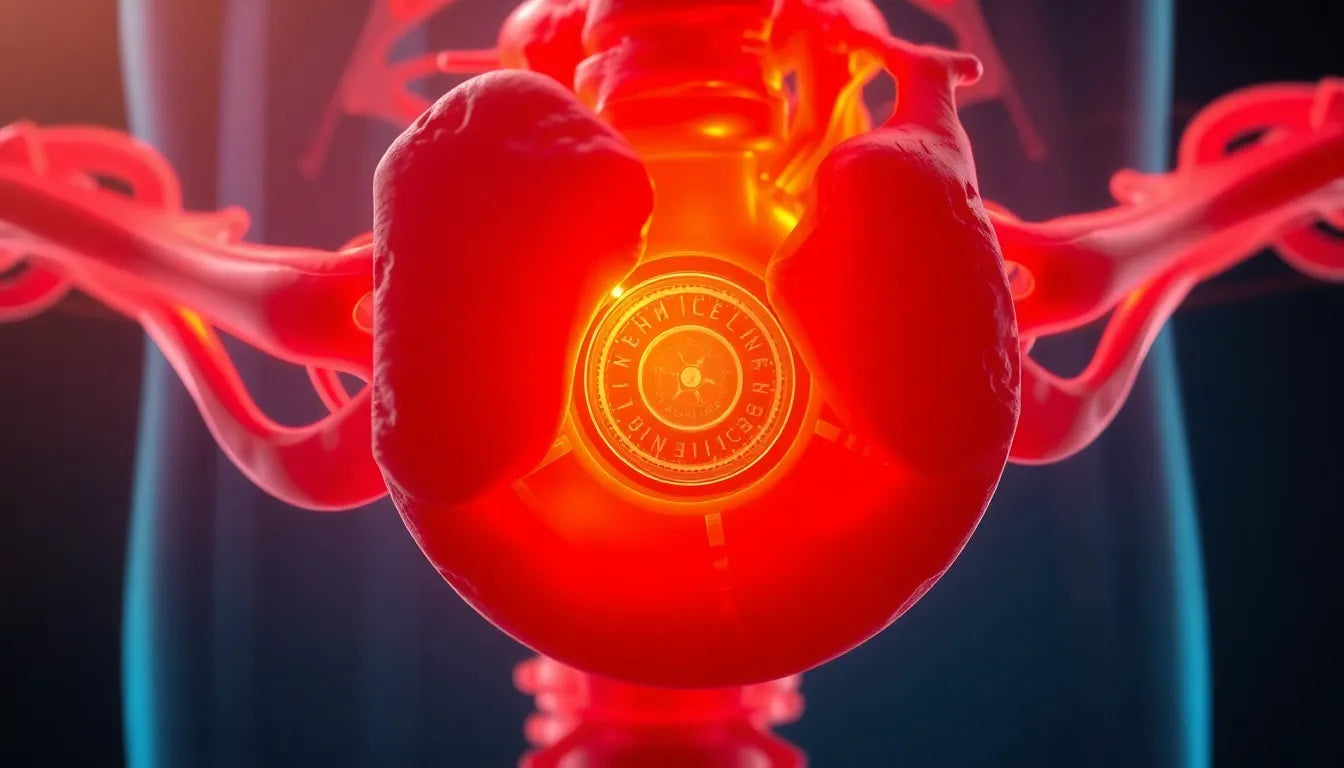When your furry friend is diagnosed with a herniated disc, it can be a daunting experience for any pet owner. Understanding what a herniated disc is and how it affects dogs is crucial to navigating the road ahead. A herniated disc occurs when the cushioning discs between the vertebrae in the spine become damaged and press on the nerves, leading to pain and mobility issues. This condition can be particularly distressing for dogs, impacting their ability to move comfortably and enjoy daily activities.
Understanding the prognosis for a dog with a herniated disc is vital for making informed decisions about their care. The prognosis can vary widely based on several factors, including the severity of the condition and the chosen treatment path. Some dogs may recover fully with appropriate care, while others may experience ongoing challenges. Recognizing these factors can help you prepare for the journey ahead and set realistic expectations for your pet’s recovery.
The emotional impact on pet owners
Dealing with a pet's health crisis, such as a herniated disc, can be an emotionally taxing experience. As a pet owner, you may feel a mix of anxiety, concern, and helplessness as you navigate treatment options and prognosis. The uncertainty surrounding your dog’s condition can weigh heavily on your heart, making it essential to arm yourself with knowledge and resources to make the best decisions for your beloved companion.
Being informed about your dog’s condition and the potential outcomes can provide a sense of control and assurance during this challenging time. Understanding the factors that influence prognosis, such as the severity of neurological impairment and the presence of deep pain perception (DPP), can guide you in choosing the most effective treatment plan. By staying informed, you can advocate for your pet’s health and work closely with your veterinarian to ensure the best possible care and recovery.
In the following sections, we will delve deeper into the prognostic factors and recovery rates, explore available treatment options and emerging therapies, and provide real-world veterinary advice to support you and your dog through this journey.
Prognostic factors and recovery rates for herniated discs in dogs
When considering the prognosis for a herniated disc in dogs, several clinical factors play a crucial role. The severity of neurological impairment is a primary determinant, particularly the presence or absence of deep pain perception (DPP). Dogs that retain DPP generally have a more favorable prognosis compared to those who do not. This sensory ability indicates that the spinal cord is still transmitting some signals, which is a positive sign for recovery.
Statistical data underscores the varying outcomes based on the grade of injury. For instance, dogs classified as ambulatory paraparetic have a remarkable 98.4% success rate with surgical intervention. Those who are non-ambulatory paraparetic show a 93% success rate post-surgery. Similarly, paraplegic dogs with intact DPP also have a 93% success rate when surgery is performed. However, the prognosis drops significantly for dogs that are paraplegic without DPP, with surgical success rates at 61%.
Comparatively, conservative treatment options, which typically involve cage rest and medication, offer lower recovery rates, particularly for severe cases. For example, non-surgical recovery rates for paraplegic dogs without DPP are notably lower, emphasizing the importance of surgical intervention in such scenarios. The majority of dogs that undergo surgery show significant improvement within 4–6 weeks, although if there is no improvement by 12 weeks, the prognosis may be less optimistic.
Treatment options and emerging therapies
When it comes to treatment, the approach can vary based on the severity of the herniated disc. Standard options include conservative management, which typically involves strict cage rest and anti-inflammatory medications. This approach is often recommended for mild cases or when surgery is not immediately necessary.
For more severe cases, surgical intervention is usually advised to relieve pressure on the spinal cord and improve the chances of recovery. Surgery is particularly beneficial in dogs with significant neurological deficits and those who do not respond to conservative treatment. Early intervention is critical, as it often leads to better outcomes.
In recent years, emerging therapies have been explored to enhance recovery and provide additional options for treatment. These include low-level laser therapy, which aims to reduce inflammation and promote healing, and neuroprotective drugs that may help protect nerve cells from damage. Physical rehabilitation and cell transplantation are also being studied as potential adjuncts to traditional treatments. While these therapies show promise, it is essential to note that they are still largely experimental and lack extensive clinical validation.
Real-world veterinary advice for managing herniated discs in dogs
For pet owners navigating the treatment landscape for a dog with a herniated disc, practical advice from veterinarians can be invaluable. One key recommendation is to closely monitor your dog for any changes in symptoms, such as increased pain, paralysis, or incontinence. Early detection and intervention can significantly improve the prognosis.
When deciding between conservative therapy and surgery, consider the severity of your dog’s condition and the specific recommendations of your veterinarian. Surgery is often the best course of action for severe cases or when conservative management fails to yield results. However, for less severe cases, or when surgery poses significant risks, conservative management may be appropriate.
Ultimately, the goal is to ensure that your dog receives timely and appropriate care to maximize their chances of recovery. By working closely with your veterinarian and staying informed about the latest treatment options, you can make the best decisions for your dog’s health and well-being.
Understanding outcomes in special cases
Recent research has shed light on the outcomes for dogs with herniated discs affecting multiple or single sites. Encouragingly, studies indicate that dogs undergoing surgery for multiple disc herniations often experience high recovery rates, with many returning to normal function. This outcome is promising regardless of the number or specific location of the affected discs, suggesting that surgical intervention remains a robust solution across various scenarios.
Importantly, the number of herniated discs does not significantly alter the prognosis when timely surgical treatment is administered. These findings provide reassurance to pet owners facing complex cases, highlighting that with appropriate intervention, recovery outcomes can be favorable.
Summary table: prognosis by grade and treatment
| Condition / Grade | Conservative Recovery | Surgical Recovery | Notes |
|---|---|---|---|
| Ambulatory paraparetic | 72.5% | 98.4% | Best prognosis |
| Non-ambulatory paraparetic | 79.8% | 93% | Good with surgery |
| Paraplegic with DPP | 56% | 93% | Surgery greatly improves odds |
| Paraplegic, no deep pain perception | 22.4% | 61% | Poor prognosis even with surgery |
| Single/multiple cervical herniation | n/a | 91-100% | Excellent with timely surgery |
Frequently asked questions
What are the signs of a herniated disc in dogs?
Common symptoms of a herniated disc in dogs include pain, limping, reluctance to move, and in severe cases, paralysis. Some dogs may also exhibit a hunched back, loss of coordination, or difficulty in climbing stairs.
How is a herniated disc diagnosed in dogs?
The diagnostic process typically involves a thorough physical examination by a veterinarian, followed by imaging techniques such as MRI or CT scans. These tools help visualize the spine and confirm the presence and extent of a herniated disc.
What are the risks of surgery for a herniated disc?
Surgical intervention, while often necessary, carries risks such as infection, bleeding, or adverse reactions to anesthesia. However, the benefits, particularly in severe cases, often outweigh these risks, offering a significant chance of recovery.
Can lifestyle changes help in managing a herniated disc?
Yes, lifestyle modifications can play a crucial role in managing a herniated disc. Weight management, controlled exercise, and ergonomic aids like harnesses or ramps can alleviate stress on the spine and support recovery.
How long does recovery typically take?
Recovery times vary, but most dogs show improvement within 4 to 6 weeks post-surgery. Factors influencing recovery include the severity of the herniation, the dog's overall health, and adherence to post-operative care guidelines.
```html
Sources
- NCBI PMC. "Prognostic Factors in Canine Acute Intervertebral Disc Disease."
- Frontiers in Veterinary Science. "Prognostic Factors."
- NCBI PMC. "Emerging and Adjunctive Therapies for Spinal Cord Injury Following IVDD."
- NCBI PMC. "Outcomes in Dogs with Multiple Sites of Cervical Intervertebral Disc Extrusions."
- SEV Neurology Blog. "Dog Herniated Disc: Signs and What to Do."
- Vetster. "Treatment of Intervertebral Disc Disease in Dogs."























